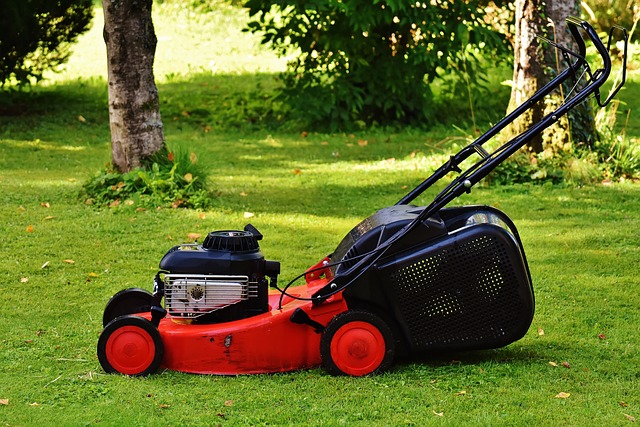Effective lawn care and landscaping are key to creating a visually appealing and functional outdoor space. A well-maintained lawn requires selecting the right grass species for your local climate, proper mowing, aeration, and fertilization to achieve density, resilience, and defense against pests and diseases. Regular soil testing helps correct pH levels and amend nutrients, essential for a healthy root system. Integrating organic matter enriches the soil's structure and its ability to retain water. Beyond aesthetics, a properly cared-for lawn supports biodiversity by providing habitats and food sources for beneficial organisms. In landscape design, balance, contrast, rhythm, and focus are important, with sustainable practices offering ecological and economic benefits. Landscape design should consider local climates, soils, and the integration of native plants and eco-friendly hardscapes to promote environmental stewardship. Strategic lawn care techniques maintain turf integrity and vitality, serving as a foundation for complementary landscape elements. Attentive planning and execution are crucial in implementing a successful landscape design that combines beauty with functionality, reflecting the principles of Lawn Care and Landscaping, which are integral to the longevity and allure of outdoor spaces. By following expert guidance on plant selection and lawn care practices, one can bring an outdoor space to life with both visual impact and environmental responsibility.
Embark on a journey through the verdant realm of landscaping design, where the artistry of lawn care lays the foundation for thriving outdoor spaces. This article delves into the essentials of maintaining a lush lawn, the nuances of landscape design to create harmonious environments, and practical steps paired with expert advice to implement your vision. Discover how mastering Lawn Care and Landscaping can transform your surroundings into a serene sanctuary or a vibrant gathering place.
- Understanding the Fundamentals of Lawn Care for a Healthy Foundation
- The Art of Landscape Design: Creating Harmonious Outdoor Spaces
- Implementing Your Landscaping Vision with Practical Steps and Expert Tips
Understanding the Fundamentals of Lawn Care for a Healthy Foundation

A well-maintained lawn serves as a foundational element in landscaping design, contributing significantly to the overall aesthetic and functionality of an outdoor space. To cultivate a lush, resilient lawn, fundamental principles of lawn care must be understood and implemented consistently. Begin by selecting a grass species that thrives in your local climate; this ensures optimal growth and resistance to pests and diseases. Regular mowing at the correct height for your chosen grass type is crucial for maintaining density and preventing weeds from taking over. Aeration, which involves mechanically piercing the soil to allow air, water, and nutrients to penetrate the roots, should be performed periodically to alleviate soil compaction and support grass root growth. Fertilization tailored to your lawn’s needs throughout different seasons ensures nutrient availability for healthy turf. Additionally, proper irrigation systems are essential; they conserve water by delivering it directly to the roots, thus promoting a robust and vibrant lawn without waste.
In conjunction with these practices, understanding local soil conditions is vital. Soil testing can reveal pH levels and nutrient deficiencies, guiding appropriate adjustments to foster a healthy root system. Integrating compost or other organic matter into the soil enriches it, improving its structure and water retention capabilities. Attentive lawn care not only creates a visually appealing landscape but also contributes to biodiversity by providing habitat and food sources for beneficial insects and wildlife. By adhering to these principles of lawn care, you lay down a healthy foundation that complements the broader landscaping design, ensuring a space that is both beautiful and sustainable over time.
The Art of Landscape Design: Creating Harmonious Outdoor Spaces

Landscape design is an art form that transforms the natural environment into harmonious outdoor spaces, offering a blend of functionality and aesthetics. Professionals in this field carefully craft each element to ensure a cohesive and pleasing composition. The principles of balance, contrast, rhythm, and focus are woven together with thoughtful lawn care practices, creating an inviting oasis that complements the architecture of a home and enhances its surrounding landscape. Attentive selection of plant life, textures, and materials all contribute to the design’s success. By considering local climate conditions and soil types, designers can select plants that thrive in their environment, reducing maintenance and ensuring long-term beauty.
Incorporating sustainable practices into landscape design not only respects the environment but also offers economic benefits over time. Lawn Care and Landscaping play pivotal roles in maintaining these spaces. Strategic lawn care, such as proper mowing, watering, and fertilization, keeps grass lush and healthy, acting as a foundation upon which the rest of the landscape builds. The integration of native plants, xeriscaping, and low-maintenance hardscapes like pathways and water features not only adds character to the space but also conserves resources, making the outdoor environment both stunning and sustainable.
Implementing Your Landscaping Vision with Practical Steps and Expert Tips

When realizing your landscaping vision, careful planning and execution are paramount to achieve a thriving outdoor space. To begin with, assess your available space and consider how each element will complement the others. Lawn Care and Landscaping play pivotal roles in the success of your design, as a well-maintained lawn sets the foundation for an aesthetically pleasing environment. Start by outlining your vision on paper, noting key features such as garden beds, water elements, pathways, and seating areas. This preliminary sketch will serve as a guide during the implementation process.
Once your design is set, proceed with selecting plant species that are not only visually appealing but also suited to your local climate and soil conditions. Choose native plants where possible, as they tend to require less maintenance and are better adapted to local pests and diseases. For lawn areas, opt for grass varieties that thrive in your region and invest in quality lawn care tools and practices. Aeration, proper watering schedules, and regular mowing will keep your lawn lush and healthy. Additionally, expert tips suggest incorporating elements like mulch to retain soil moisture and suppress weeds. By breaking down the process into manageable steps, you can transform your landscaping vision into a tangible reality that enhances both the functionality and beauty of your outdoor space.
Landscaping design and implementation are multifaceted endeavors that require a blend of artistry and science, grounded in the fundamentals of lawn care. A well-maintained lawn serves as the cornerstone of any outdoor space, ensuring its health and longevity. By understanding the intricacies of lawn care, homeowners can create a robust foundation for their landscape design. The journey from concept to reality in landscaping is a rewarding process that transforms ordinary yards into harmonious, functional, and aesthetically pleasing extensions of one’s living space. With practical steps and expert tips at hand, bringing your landscape vision to life becomes an achievable goal. Investing in quality lawn care and thoughtful design elevates the outdoor experience, making every green space a testament to the beauty that can be cultivated with diligence and creativity.
